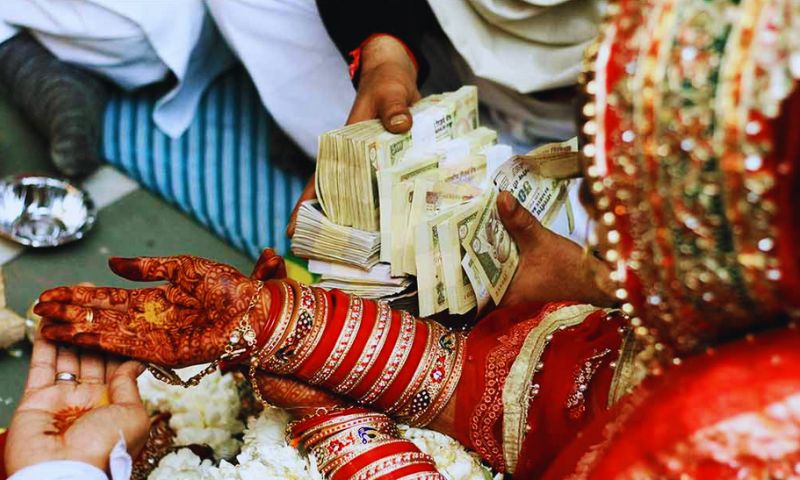DELHI: As education and job opportunities for men in India have improved over the decades, a new study has found that the prevalence of dowry has risen.
According to the BBC, paying and accepting dowry is a centuries-old tradition in South Asia where the bride’s parents gift cash, jewellery and clothes to the groom’s family. Even though the practice has been illegal in India since 1961, it continues to thrive and leaves females vulnerable to domestic violence and even death.
Jeffrey Weaver of the University of California and Gaurav Chiplunkar of the University of Virginia examined more than 74,000 marriages in India between 1930 and 1999 to observe the development of dowry over time.
They calculated “net dowry” as the difference between the value of cash and gifts given by the bride’s family members to the groom or his family and those provided by the groom’s family to the bride’s family. The researchers relied on data from India’s Rural Economic and Demographic Survey, the panel surveyor of households across 17 of India’s most populous states.
Indian marriages are still arranged, and all women marry by their late twenties. Some 90 per cent of the marriages studied until 1999 involved dowry. Dowry payments between 1950 and 1999 amounted to nearly a quarter of trillion dollars.
The study found that economic growth perpetuated and boosted the practice of dowry payments, especially from the 1940s to the 1980s.
Jeffrey Weaver said, “Over this time, more men were getting educated and better quality jobs, which led to a rise in dowry.”
According to the study, the emergence and development of dowry can be effectively understood by considering the changing distribution of groom quality, which correlates with advancements in their advanced education and earnings. (The low participation of females in India’s workforce means more and better jobs for men.)
In other words, ‘higher quality grooms’ – advanced-educated and having better quality jobs – command higher dowries. The study found that as the number of educated grooms in a marriage market rises, there’s a decrease in the “dowry premium” that more advanced educated grooms receive.
“Powerful economic factors perpetuate dowry. On the bride’s side, families who refuse to pay the dowry for their daughters are left with ‘lower quality’ grooms. Grooms have the powerful economic incentive to accept dowry, particularly if their family has to pay the dowry for its female children or wants to recoup investments in groom’s education,” write Weaver and Chiplunkar.
























